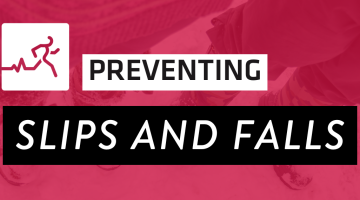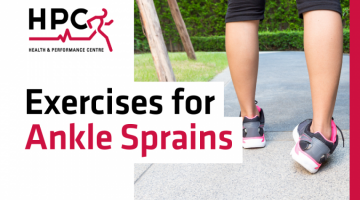HPC’s How To: Proper Squat Form to Avoid Injury | Physiotherapy Guelph

Do you experience pain while in a squatting position either during exercise or throughout the day, when simply squatting down to pick up toys or to lift a box? Discomfort may happen under your kneecap or in other parts of the joint, depending on the cause. If you’ve experienced some trauma to your knee, call us to schedule an appointment to rule out serious situations. If you’re simply having some general pain when you squat, you may try adjusting your squat form at home with these simple tips provided by our Head of Physiotherapy Department, Registered Physiotherapist, Brett Lyons.
Remember, one of the keys to successful rehabilitation is quality, not quantity. Proper movement patterning in physiotherapy is crucial for full recovery from an injury. Just like learning any new activity, motor relearning requires concentration and focus to get it right. Sometimes less is more.
What are some causes of knee pain?
One of the most common causes of knee pain during a squat is pain that arises from the under surface of the knee cap. Often this pain is caused by the kneecap (patella) tracking improperly in the groove that it sits in on the thigh bone (femur). This is referred to as patellofemoral pain syndrome (PFPS). PFPS can occur because of an imbalance between the muscles of the thigh and hip. This can lead to the patella being pulled out of position and can cause increased stress and pressure on the bottom surface of the patella. In severe cases, it can lead to thinning and softening of the cartilage on the surface of the patella because of the rubbing that occurs. This condition is known as chondromalacia patella.
What/how is this diagnosed?
PFPS is diagnosed clinically through both subjective interviewing and a number of clinical tests. Pain-provoking movements are typically assessed by the clinician and repeated after correction of patellar movement. If there is a reduction in the pain with correction, it is often an indication that the pain is caused by PFPS. Improper tracking of the patella can also be seen on x-ray, and is often diagnosed using a skyline view x-ray.
What are some treatments offered by HPC’s practitioners for the pain?
PFPS responds very well to conservative treatment, and very rarely is surgery needed. Treatment includes techniques to reduce the inflammation and pressure on the surface of the patella. This is done through a number of different treatment strategies including mobilisation of stiff joints, correction of lower extremity movement patterns, release of tight muscles and taping to realign the patella. Once the pain from the PFPS has settled, previously painful activities are reintroduced using different muscle activation patterns to prevent the injury from coming back.
There are several things you can do now to prevent PFPS from occurring during sport, daily activities and your workouts. One example is to use proper form when squatting.
Prevention
Make sure you’re squatting with proper form:
- Start by standing with your back against a wall, feet about shoulder-width apart. Your heels should be 18 inches away from the wall, and your knees should be in line with your heels.
- From there, take a deep breath and squat as your exhale, sitting down as far as you can without dropping your bottom below your knees. Make sure to keep your knees in line with your heels.
- To return to standing, tighten your core muscles and flatten your back against the wall. Inhale as you slowly raise to your original standing position. And be sure to push from your heels and not the balls of your feet to ensure you’re using the muscles in the back of your legs. You should be able to feel your butt muscles (gluteals) contracting as you push yourself back up. If you don’t feel them, try spreading the floor with your feet by pushing your knees and feet outward as you stand back up. This will help you decrease the amount of work your quads do during the squat and reduce the pressure on your patella.
- As you get better with your squat and become more comfortable with it, perform the squat away from the wall using the same technique. Be sure to bring your arms out in front of you to counterbalance the rest of your body so that you don’t fall backwards.
- Try doing squats in front of a mirror so that you can keep an eye on your form. Or, if you’re a member of a gym, ask one of the on-staff trainers to watch you do a squat. They can help you identify improper form.
Other tips you can incorporate into your daily life include:
- Ease up on activity if you feel discomfort. Knee pain while squatting may be caused by overuse, so resting may help you to avoid injury and heal faster.
- Exercise regularly to keep your muscles and bones strong. Increase activity gradually to avoid injury.
- Make sure you properly warm up and cool down from all athletic activities.
- Wear any recommended orthotics to keep the alignment of your leg in check. Flat feet or high arches may contribute to your risk of injury. These devices can be custom made by a pedorthist or prefabricated ones can be purchased.
- Incorporate strength training into your routine to target your leg muscles.
- Incorporate stretching into your routine to work on any imbalances or tightness that may lead to injury.
If you need any help with aches and pains, give us a call here at the Health and Performance Centre at 519-767-5011.
Related Articles:
HPC's How To: Protect Your Back While Shoveling Snow



